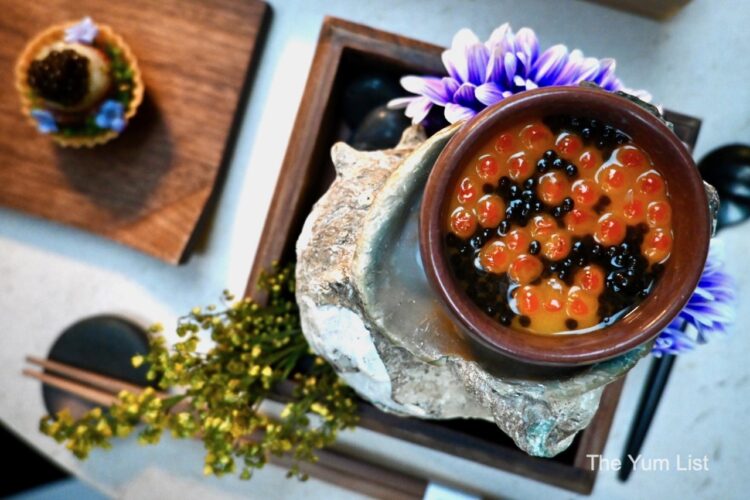Zoku Restaurant, Wan Chai
Monica Tindall
Walking the streets of Wan Chai, Hong Kong, you’d never guess the hidden gems to be found down small alleyways and a few floors above. At first look, the area appears to be a hub for home renovation shops, karaoke bars, and the odd wet market. However, investigate a little deeper, and you will find some of the city’s hippest bars and restaurants claiming an address here. Zoku Restaurant at The Hari Hong Kong is one such example, and I’m about to find that once inside, there is even more than meets the eye.
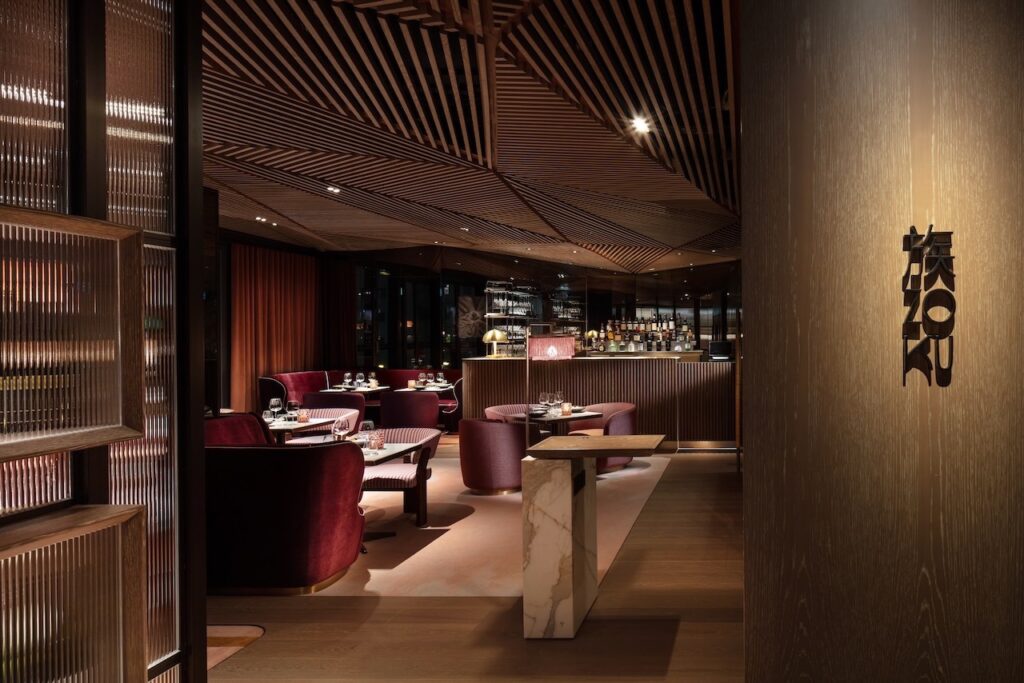
Zoku Restaurant
Zoku Restaurant is described as “a tasteful tribute to the culinary culture of Japan… a refreshing take on Japanese cuisine – focused on quality and ingenuity.” Intimate booths in leather and fabric are lit with pink lampshades hanging from an origami-esque ceiling. The exciting sound of cocktails being shaken and upbeat vibes emanate from the corner bar. At the same time, the plant-lined terrace is popular for semi-alfresco dining and smokers (yes, they still do that in public places in Hong Kong). It makes a cheerful setting for a quick set lunch during the day, or a versatile space for cocktails and snacks or a full booze-paired dinner into the extended evening.
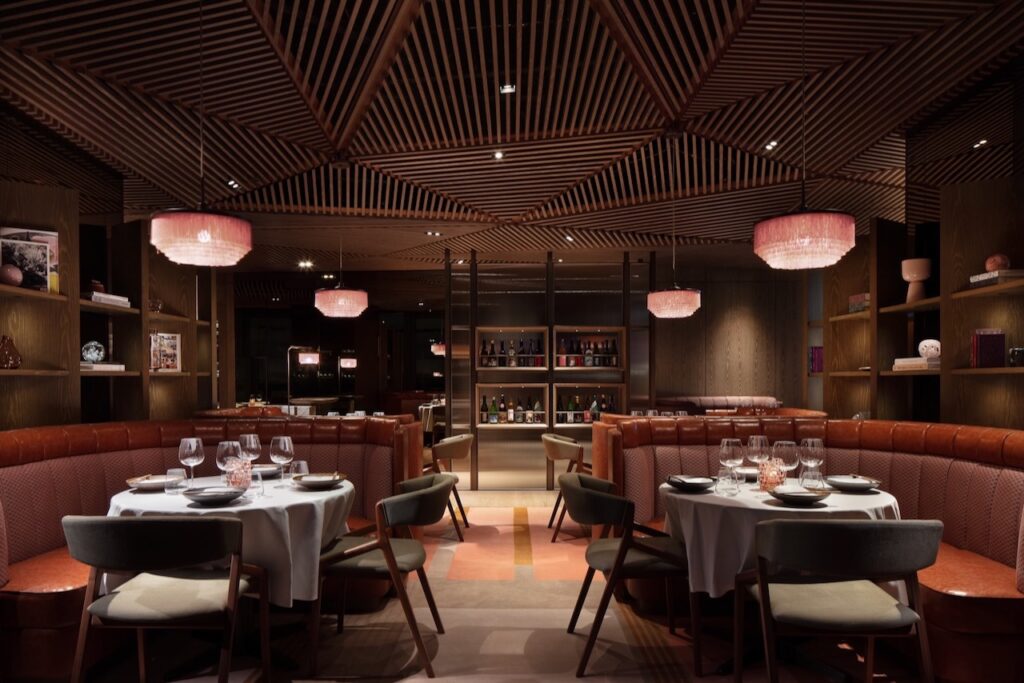
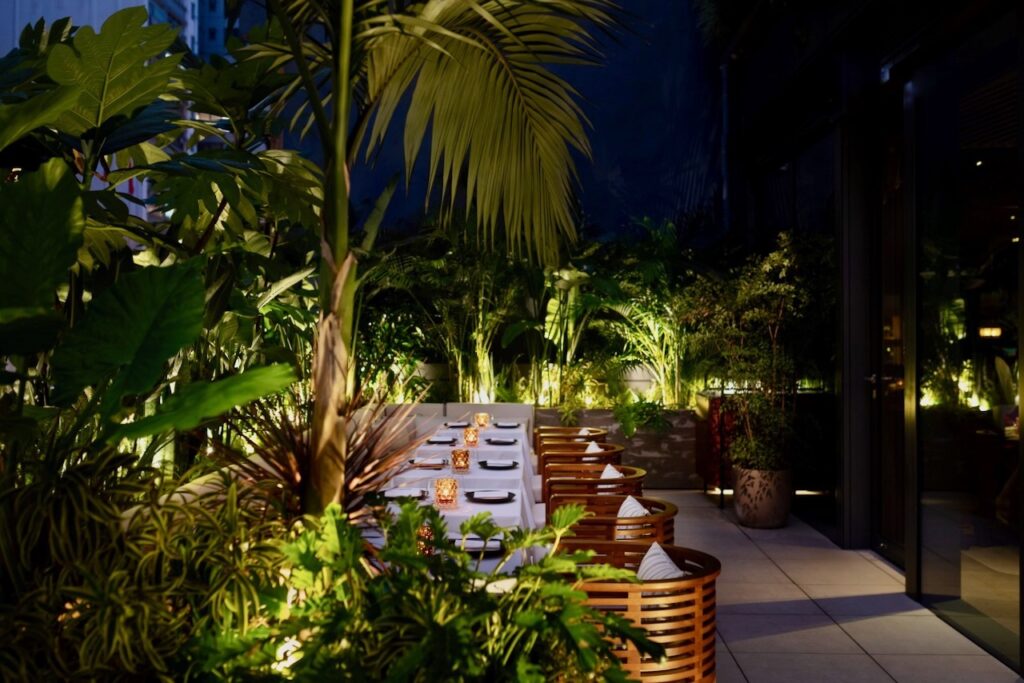
Kitchen Crew – Zoku Restaurant
The first surprise is in the kitchen. Zoku Restaurant is fortunate to be home to not one but three (!) Peruvian chefs. Chef de Cuisine Edwin Guzmán is assisted by Aldo Shimabukuro (Peruvian Japanese) and Andres Chion (Peruvian Chinese). Formerly working with some of the top chefs in Peru, such as Gastón Acurio and Mitsuharu Tsumura of Maido (World’s 50 Best Restaurants fame), Guzman and Aldo were charged with the mission to set up Aji MGM Cotai, the first Nikkei restaurant in Macau.
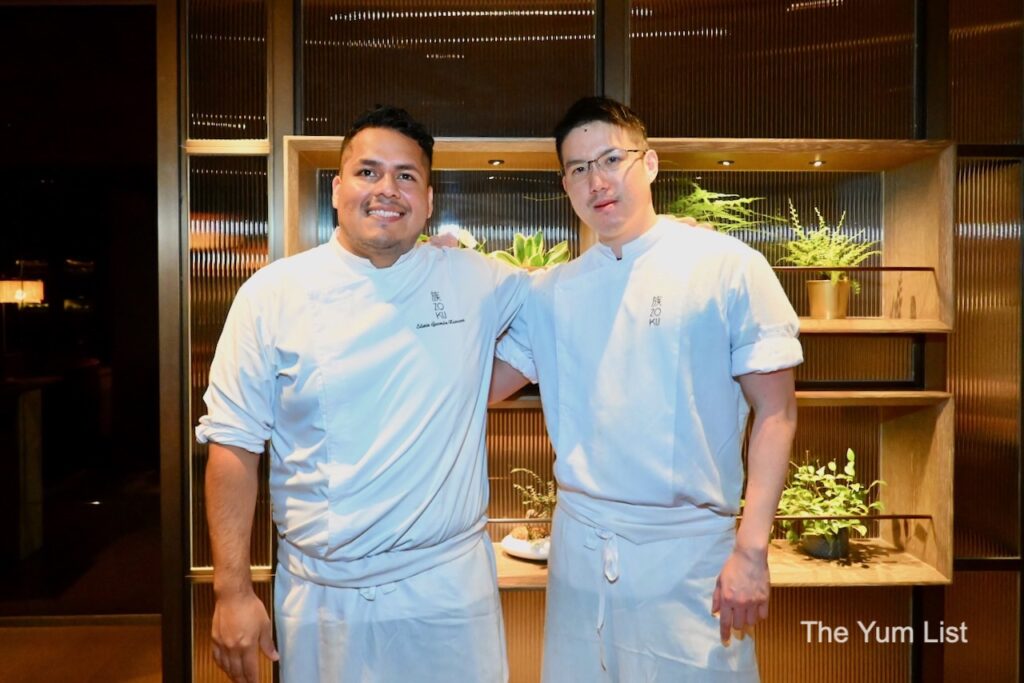
As a result of the Japanese migrating to Peru, Guzmán describes Nikkei cuisine as 80 per cent Peruvian ingredients making Japanese recipes. With his new venture as chef de cuisine at The Hari Hong Kong, he switches the ratios, making dishes with 80 per cent Japanese ingredients and 20 % Peruvian flair. As part of his evolution as a chef, he regularly travels to Japan, sourcing products and learning the culinary history behind ingredients and recipes.
Drinks Menu
The drinks menu comprises a handful of signature cocktails and mocktails, a solid selection of sake and shochu, carefully chosen international wine labels, a whole page of Japanese whiskies and a range of international spirits. My helpful server, Melina, recommends the Suzie Wong ($108) cocktail to stimulate the appetite. Inspired by Richard Mason’s novel, The World of Suzie Wong, it offers intrigue, just like the story. Scotch whisky, rose syrup (I asked for less sweet), cucumber, bitters and yuzu soda make for a charming combination. Note to future self: trust Melina’s tips.
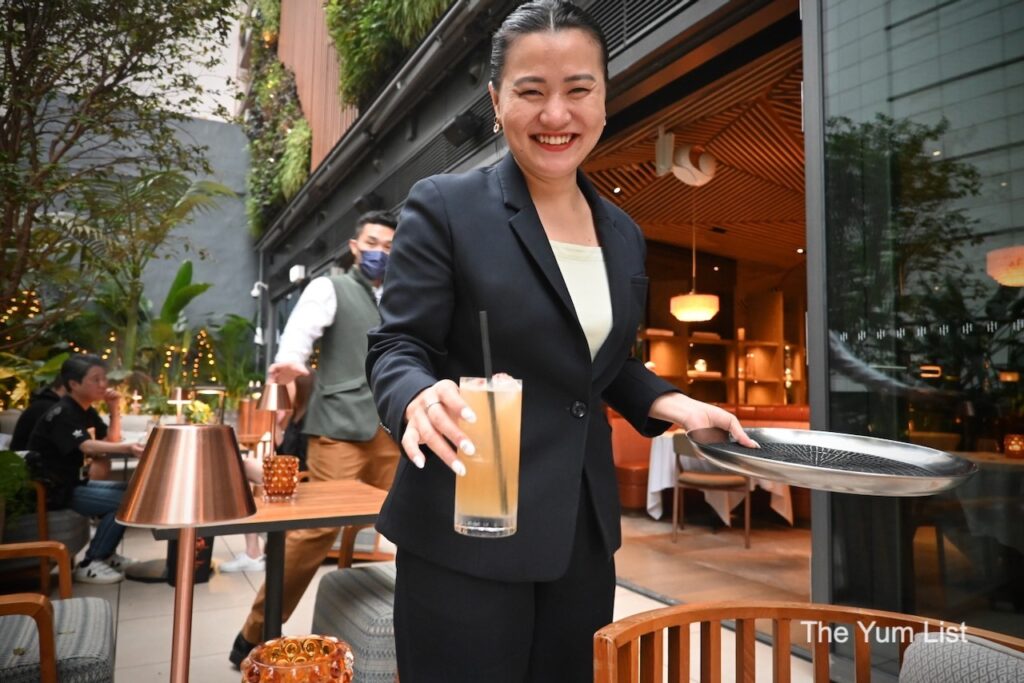
Zoku Experience Dinner
You could keep choosing drinks from the menu or opt for the cocktail and shochu pairing ($398 per person) with The Zoku Experience Dinner ($888 per person). In celebration of the Japanese regions of Kumamoto, Miyazaki, Kagoshima, and Okinawa, the Zoku Experience presents six courses with premium products and recipes from the aforementioned areas with cheeky Peruvian flecks amongst tradition.
Snacks
Representing Kumamoto is crab, potato and rice. Given Chef’s Peruvian origin, it makes sense that potato (there are over 4000 kinds in Peru) is part of the launch. It’s a petite tower of freshness and crunchiness and causes the mouth to water. Next, for Miyazaki, is Wagyu tartare, topped with a round of daikon and caviar. The meat’s fattiness is absorbed by the crispy filo pastry shell. Lastly, from Okinawa comes sea snail chawanmushi topped with a splash of sweet soy sauce, caviar and salmon roe. The differently-sized spheres burst in divergent layers of intensity. All are gorgeously presented on various square plates and boxes with generous use of ceramics and flowers, inspiring images of nature and the spring season.
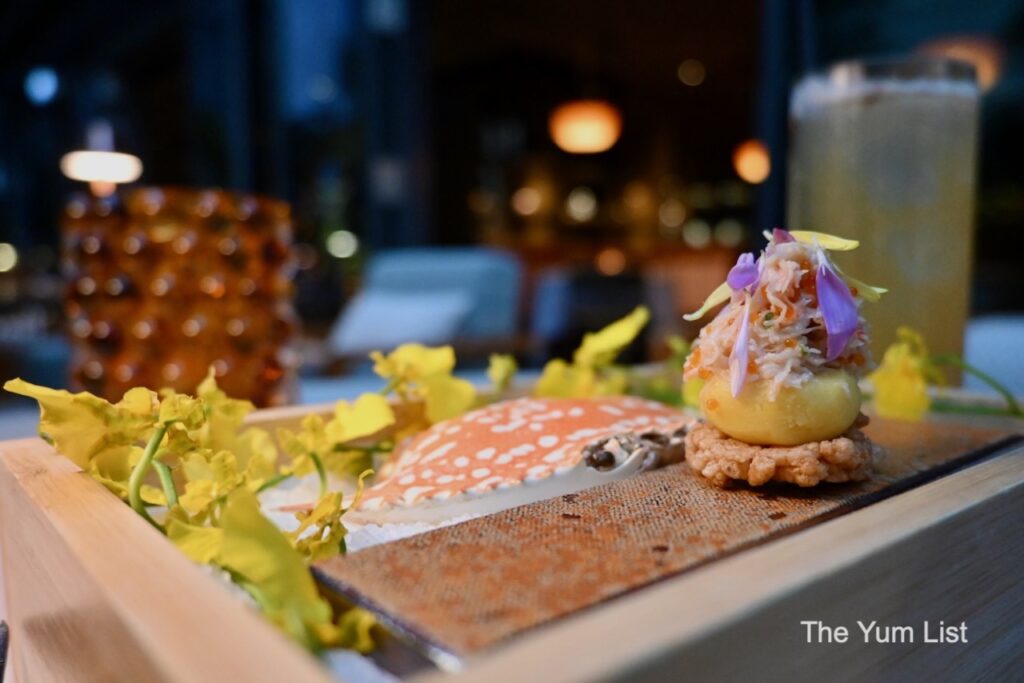
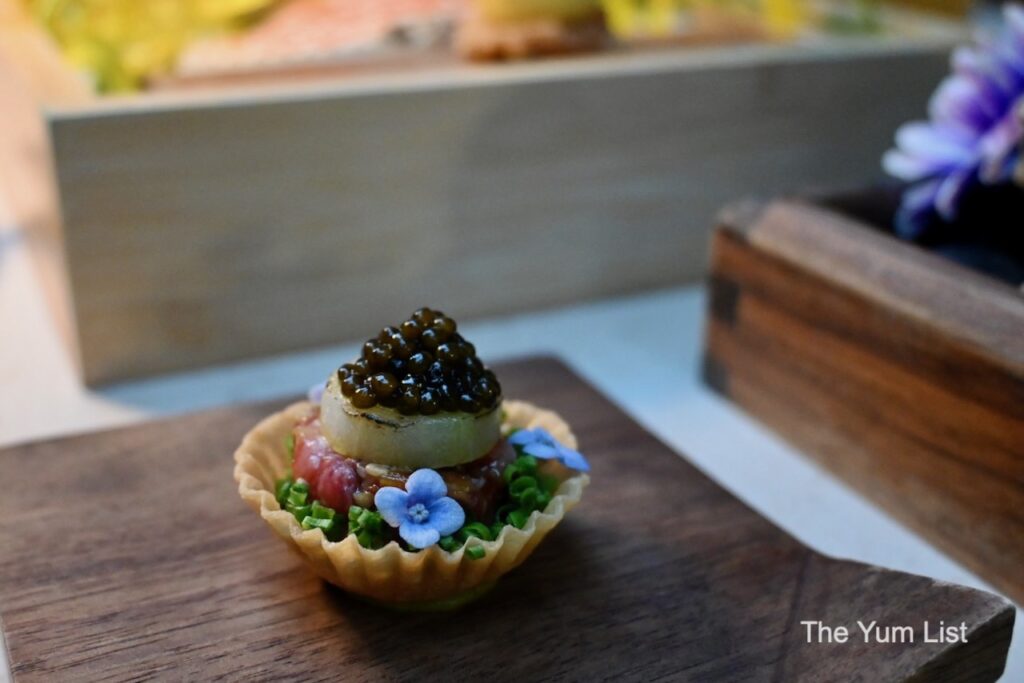
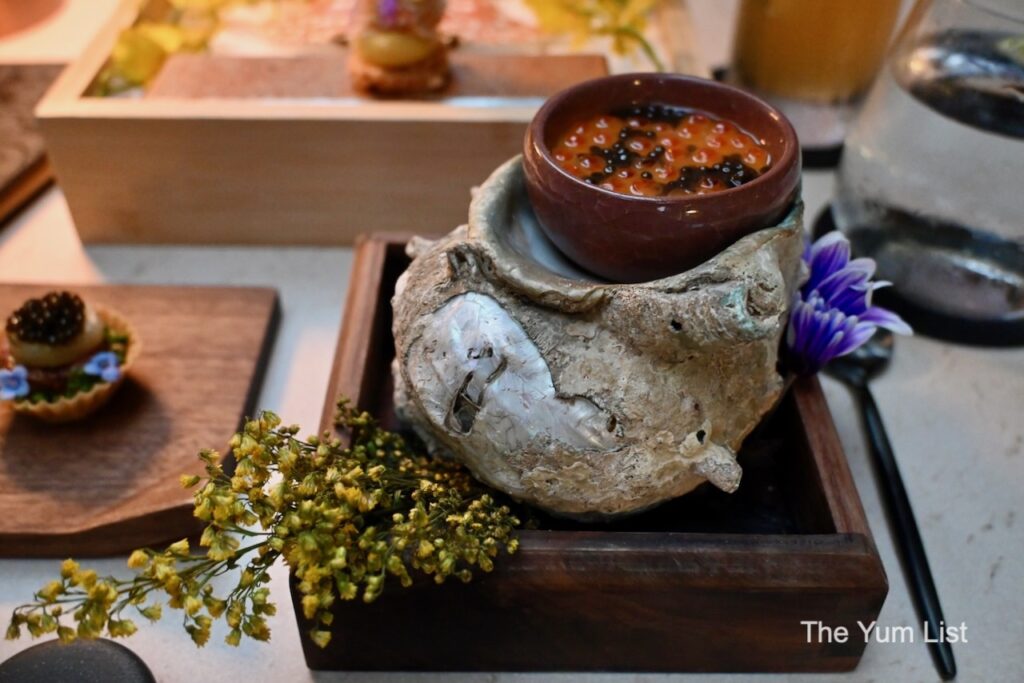
Mackerel (Kagoshima)
The next course sees strips of tender mackerel arranged in a pattern of rose petals atop an edamame puree base. It’s complemented by vibrant orange globules of ikura. It’s a beautiful presentation and tastes wonderfully fresh, but the crowning glory is a wasabi sauce. It’s actually a leche de tigre (marinade used for ceviche) base with a hint of wasabi. Chef pours it on as the dish is delivered, leaving half the bottle for adding to taste. It’s so good I consider asking if I can take the remaining half away. I imagine a splash of this could turn otherwise ordinary breakfast dishes into something special. I also have a recipe with gin, or maybe tequila, in mind for experimentation.
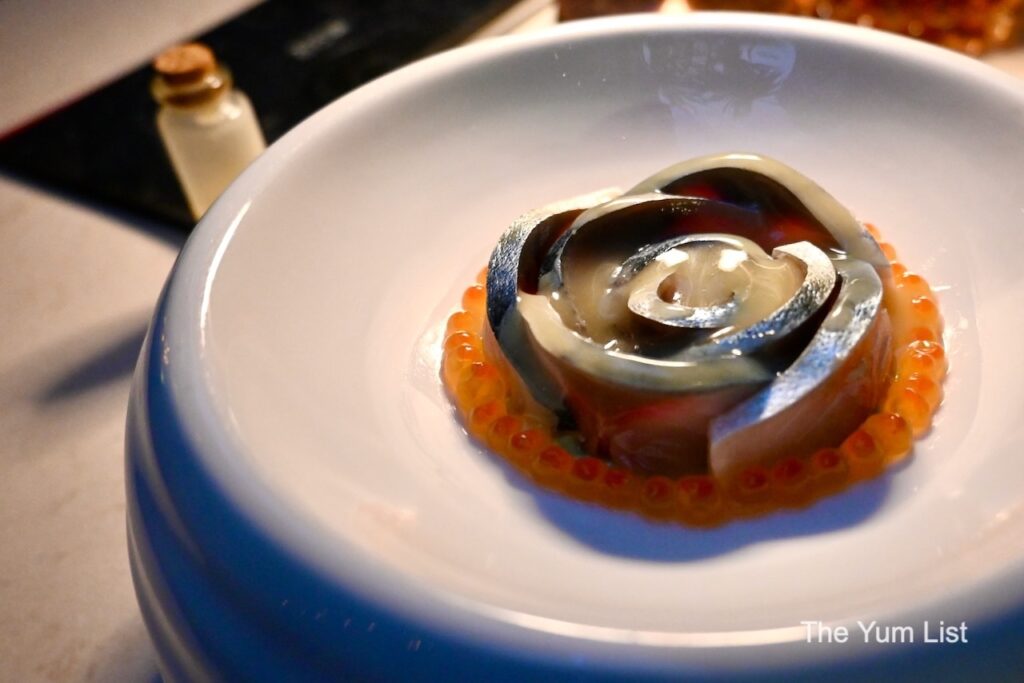
Off-menu Nigiri – Zoku Restaurant
One of the signatures in the chef’s previous workplace, Maido, was nigiri. Chef Edwin explains that partly because the ingredients were not identical to Peru and because Peruvians had a culture of slightly more complicated flavours, Peruvians found it hard to adapt to Japanese sushi when it was initially introduced by migrants. So, in the many Japanese Peruvian restaurants in the country, they tried to make something a little different. Initially, nigiri was hard to understand because of its plainness. Even in Peru, they didn’t have wasabi. It was a different experience. So, Nikkei cuisine is a play on Japanese tradition. Everything, including condiments, is found in a single bite without the necessity for adding soy sauce or wasabi.
The first, on a platter of three, is a base of sushi rice topped with foie gras, tuna, an elegantly sweet eel sauce and shiso leaf. The chef torches it upon delivery, caramelising the top and creating wonderful aromas. The second bite layers a crispy sushi-rice bed with scallops and sea urchin in two textures (fresh and emulsion). It’s as much a play on textures as it is on flavours. Lastly, salmon belly crowned with shaved French winter truffles is a clever version of “surf ‘n’ turf,” merging the earth with the sea.
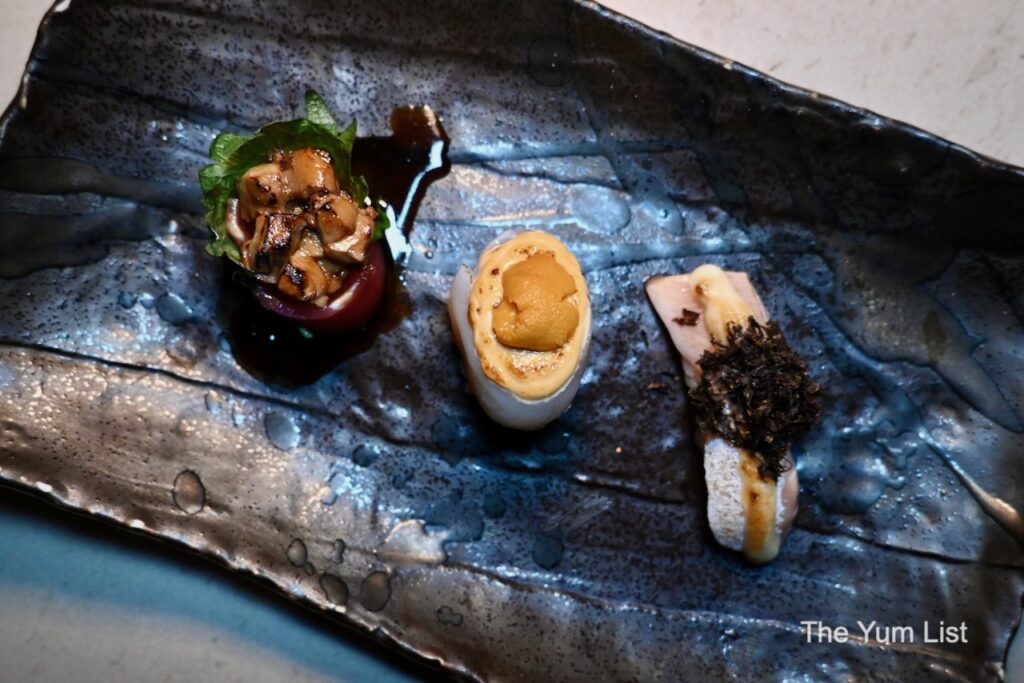
Katsu Sando (Kagoshima)
Seems that katsu sandos have swept the world with their popularity, and Zoku Restaurant’s crispy pork belly version is a verified hit. Not only is the plating elevated, but so too are the flavours. The original recipe’s tonkatsu sauce has been replaced with panca chilli paste, made from Peruvian red peppers (aji panca) that have little to no heat but are instead prized for their flavour and almost deep burgundy hue. Besides a little miso mixed in, there’s also a swirl of siracha emulsion decorating and adding further moisture to the top. Spring onions, lemon and flower petals supply freshness, and the meaty bites disappear in seconds.
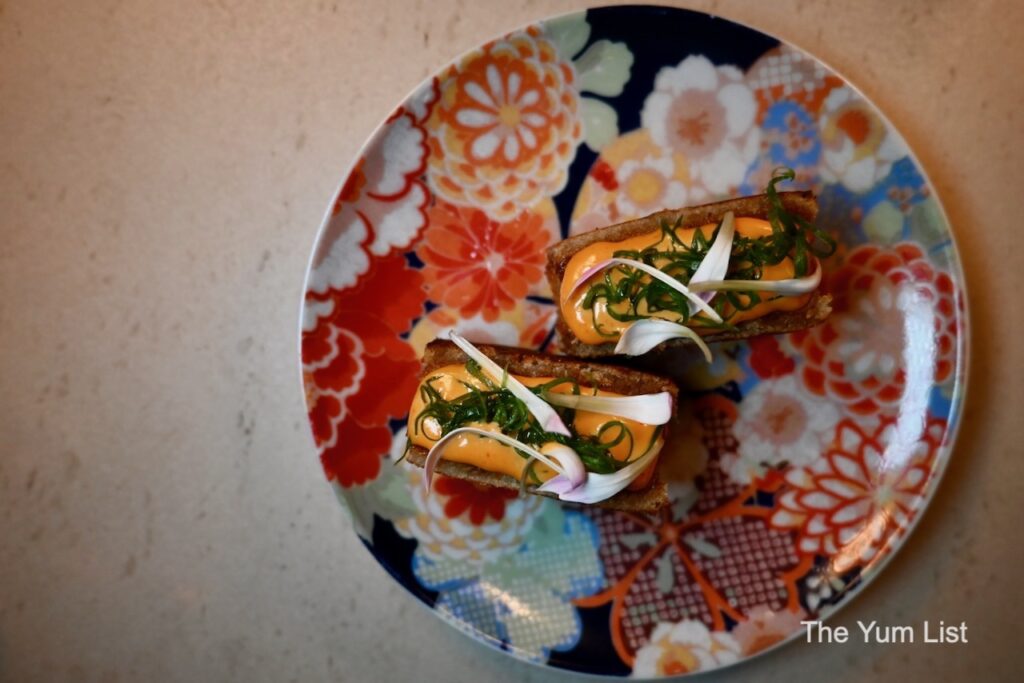
It’s time for another beverage, and for this round server Karma delivers a Yozakura Sour. Chef Edwin has recently returned from Japan, where he sourced not only ingredients but beverages for the current menu. The shochu base for this cocktail, Yaezakura Sen from Furusawa Jozo, has had baked sweet potato added to the ferment, producing a liquor that is crystal clear yet with notes of both rice and sweet potato. Given Peru’s rich potato history, it’s an unmissable opportunity to represent both countries in one glass. The Yozakura Sour, a take on a Peruvian Pisco Sour, combines purple sweet potato and shochu, shaken over ice with egg white, creating a pretty lavender shade in the glass with a frothy white top.
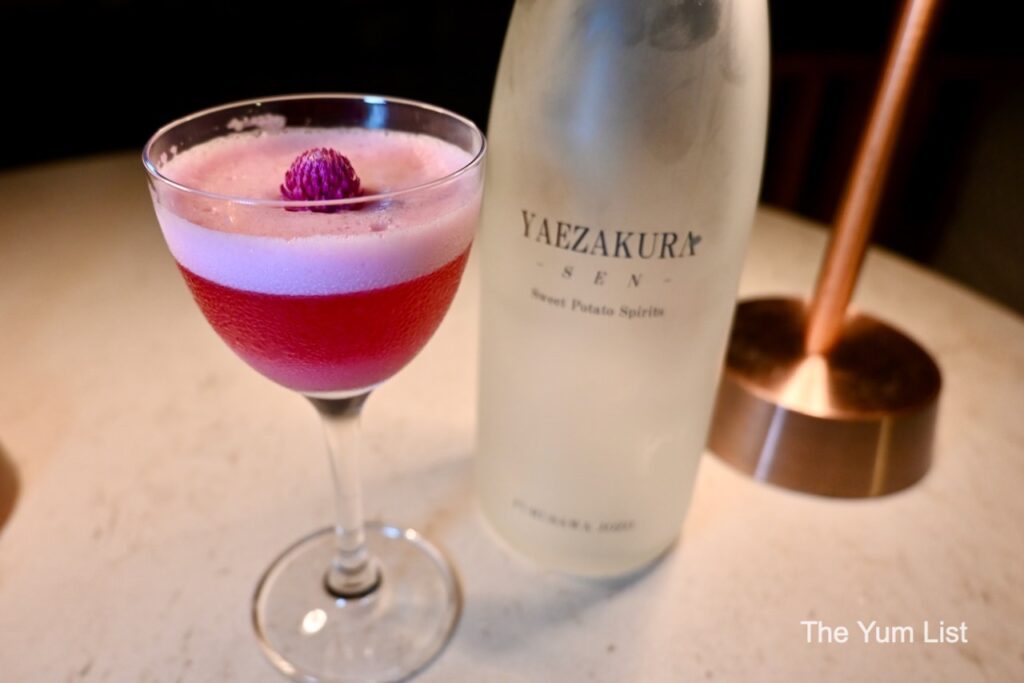
Zoku Restaurant – Kuro-Dai
The next course, Kuro-Dai (Miyazaki), presents a black sea bream fillet cooked on the grill. The bones have been used to make a reduction that is then mixed with shishito pepper, yellow chilli (added for customers who appreciate Peruvian cuisine, me!) and chopped onions. Coriander and mint oil is drizzled over the top, along with a sprinkling of shimeji mushrooms and Okinawan seaweed grapes (also dubbed caviar of the sea). The grapes contribute a light brininess in profile and petite explosions in the mouth. Nothing goes to waste at Zoku with the seaweed rice cracker made with the dehydrated powder of the “sadder” sea grapes (ones with less water content). The aji amarillo in the sauce (let the chef know ahead of time if you want this – I highly recommend it) weaves a gentle but persistent thread of spice through the dish. Like a fine wine, it lingers, gradually fading in strength quite some time after swallowing.
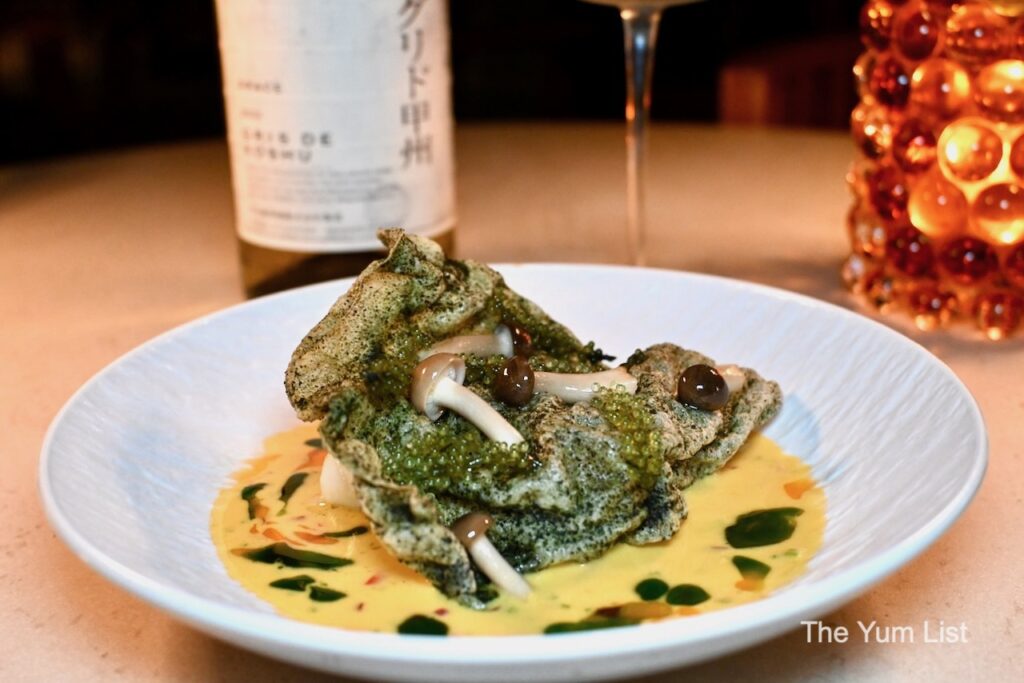
Restaurant manager Valentina recognises my love for wine and trying new varietals and pours me a glass of the newly acquired Gris De Koshu, 2021 ($158 glass) from Grace Wines from Yamanashi, Japan. The fourth-generation family business began making wine from the koshu grape in 1999, finding it similar to Alsace pinot gris. I find citrus (loads of lemon) with jasmine and a hint of spice in the bouquet. It’s clean and round in the mouth with medium acidity, cleansing the palate of the creamy textures in this dish.
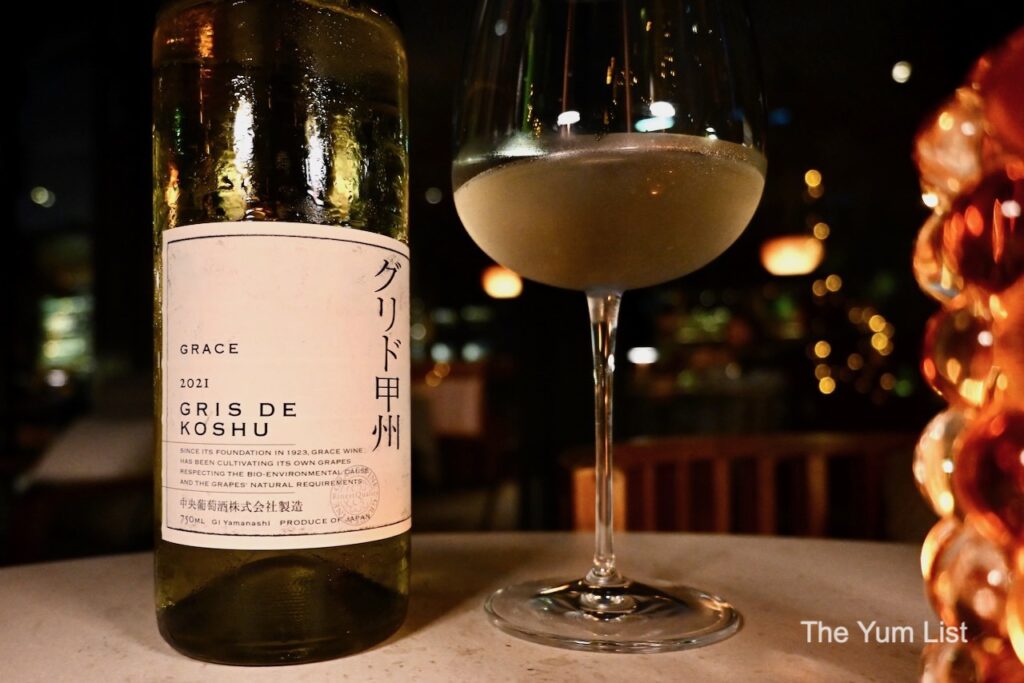
Zosui (Kumamoto)
The menu has been steadily building, and the meal peaks with a traditional dish from Kusho, Zosui. At the most basic level, it’s a rice soup. At its most elevated, it’s premium short-grain rice with lobster and coriander oil. Panca chilli makes a reappearance adding depth of flavour to the bisque-like liquid, and the firm-textured rice is a wonderful sponge taking on the full character of the soup into every grain. The hearty pieces of clean lobster meat feel very generous, and even though the soup is complex with a discerning level of spice, the delicate sweetness of the lobster meat still shines through.
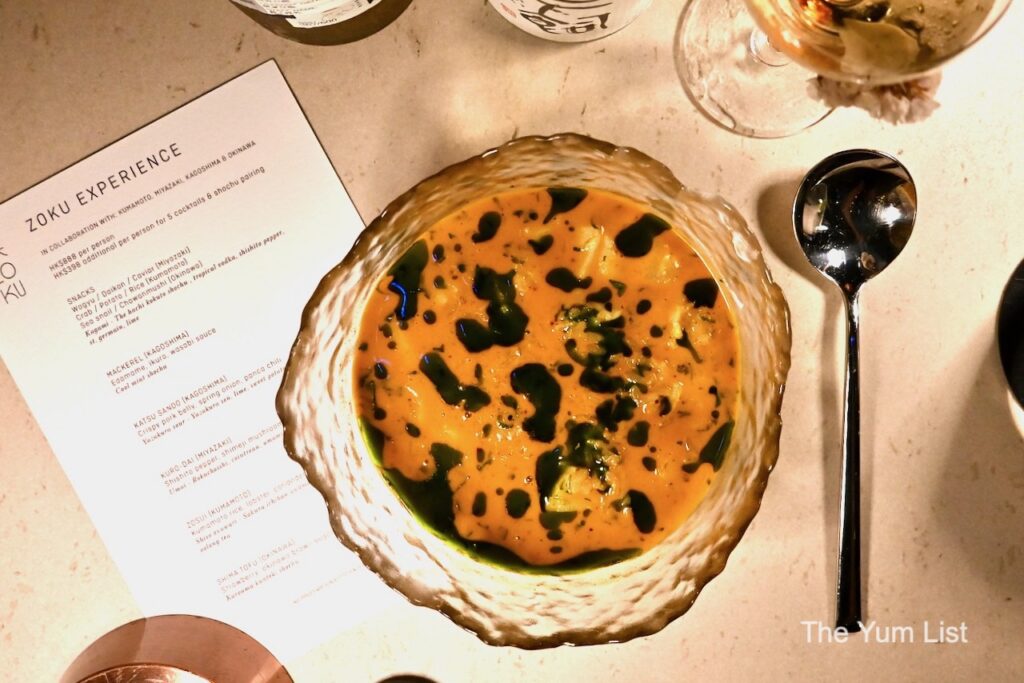
Fortunately, I have a Shochu Martini to tame the heat. The base comes from Tori Kai, which has remained a family business since its beginning in 1575! It’s supported by Ki No Tea dry gin, sencha and yuzen vinegar. The roundness of the rice is mirrored in sweetness in the cocktail, which takes the edge off the spice.
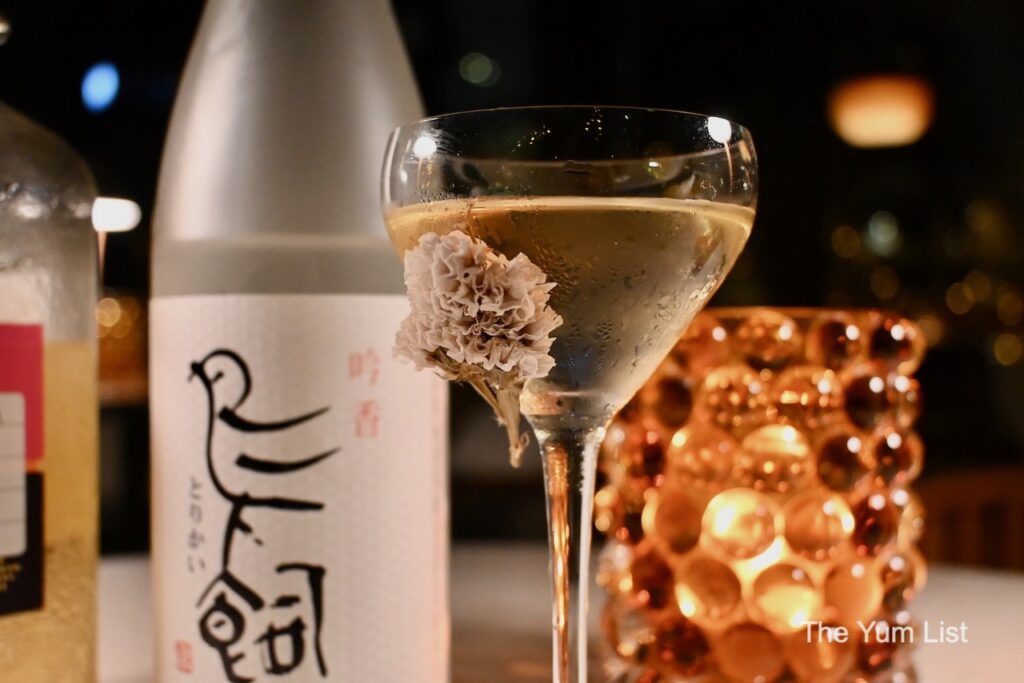
Citrus (Kumamoto)
I marvel at the time that must have been spent creating the pre-dessert compared to the seconds in which it is gone. Three ingredients, orange, peach and awamori make the sorbet, which is delivered in a swirl of dry-ice smoke, mirroring the volcano from that region. The tiny bowl is ringed by carefully placed chocolate-coated rice crispies contributing a little crunch to the smooth, cool sorbet.
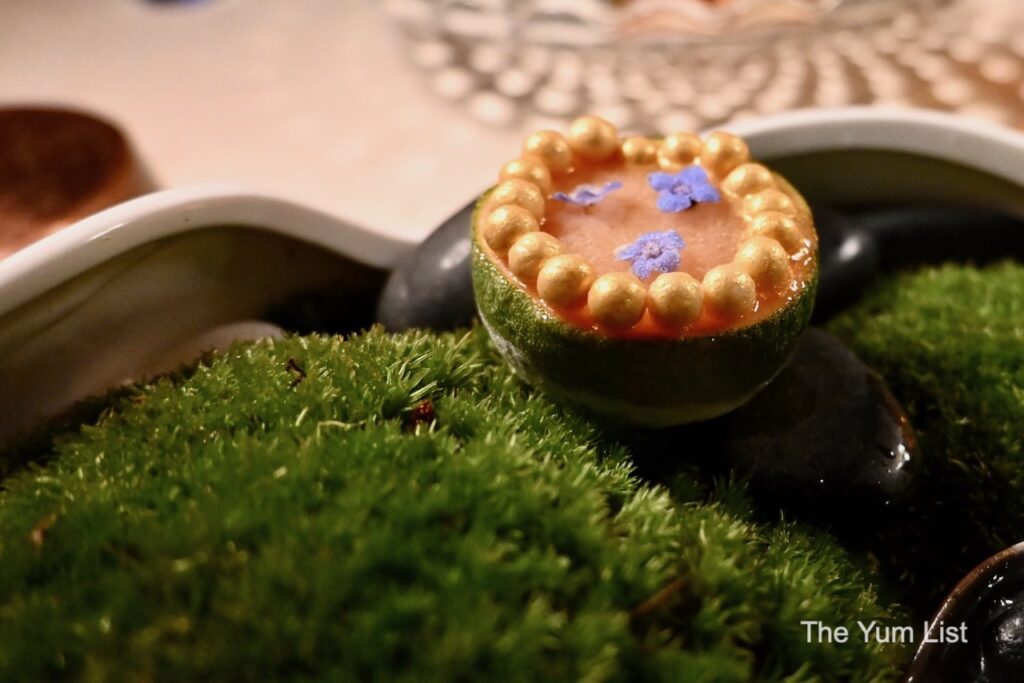
Shima Tofu (Okimawa)
The menu concludes with Shima Tofu, based on a traditional Cantonese recipe but using Japanese ingredients of strawberries and Okinawa brown sugar. It’s layered between a vanilla galette with two textures of strawberry (jelly and natural), clove and cinnamon, providing a sweet ending yet avoiding the feeling of overconsumption often the problem with heavier desserts.
Following the hidden Peruvian surprises in the preceding recipes, you might be wondering what’s the angle here. Well, if you have ever been to Peru, you would have noticed street vendors selling a popular snack resembling a doughnut – Picarones – often drizzled with chancaca (blocks of unprocessed brown sugar typical of South America) sauce. Chef Edwin says the sauce is the magic, and here it’s made using a similar process, only with the Okinawa brown sugar instead.
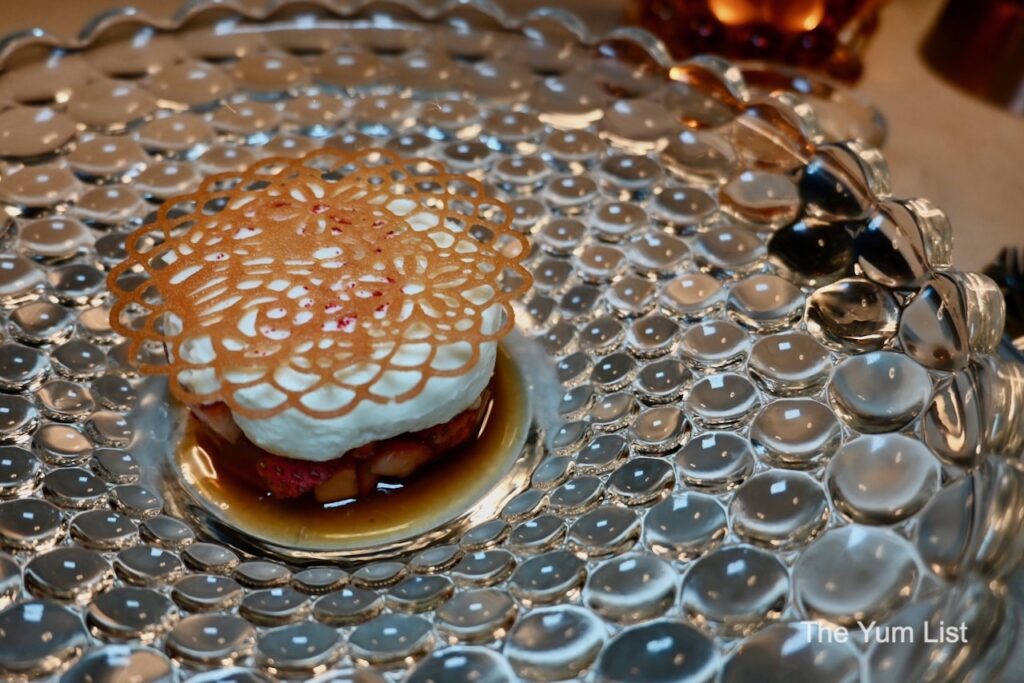
Acting as a digestive, the Kurouma Kunteki Shochu is presented along with a choice of cups. I spy the team watching as I choose – apparently, you can tell a lot about a person by their cup pick. I wonder what my selection reveals. The barley shochu has been aged in sherry casks for seven years, and the profile is reminiscent of a fine whisky, with a smoky and oaky nose and refined sweetness. It’s an excellent balance to the creamy dessert.
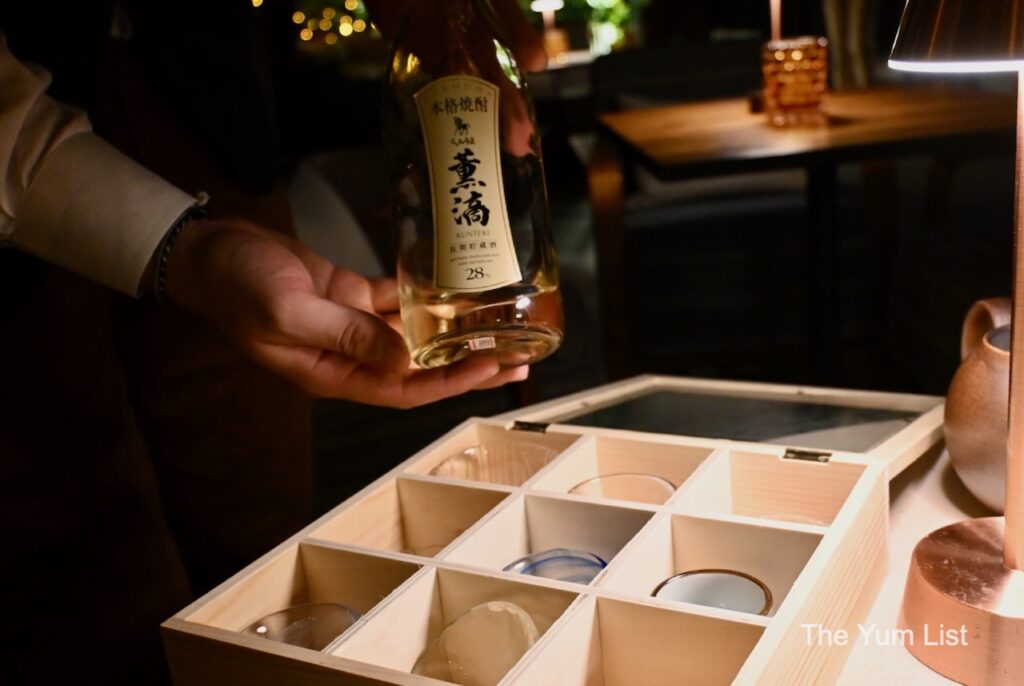
Reasons to visit Zoku Restaurant: attractive indoor and outdoor spaces – the plant-lined patio is brilliant early evening (although not as great if you don’t smoke and have smokers nearby); delicious Japanese recipes with a splash of Peruvian panache; beautifully presented meals; very capable service; don’t miss the Zoku Experience dinner for a chance to see the creative abilities of the chefs and have them explain each dish in person; let the chef know if you’d like a little extra Peruvian love in the dishes for a unique twist on Japanese cuisine.
Zoku Restaurant & The Terrace
The Hari Hong Kong
2/F, 330 Lockhart Rd, Wan Chai, Hong Kong
+852 2129 0338
https://www.thehari.com/hong-kong/the-hari-hotel-hong-kong-eat-drink/zoku/
Zoku Restaurant Opening Hours
Monday to Friday: 12 – 2:30 pm & 3 – 11 pm
Saturday & Sunday: 3 – 11 pm
Find more recommendations for gourmet travel to Hong Kong here, and stay up-to-date on the latest culinary happenings around Malaysia here and here.

